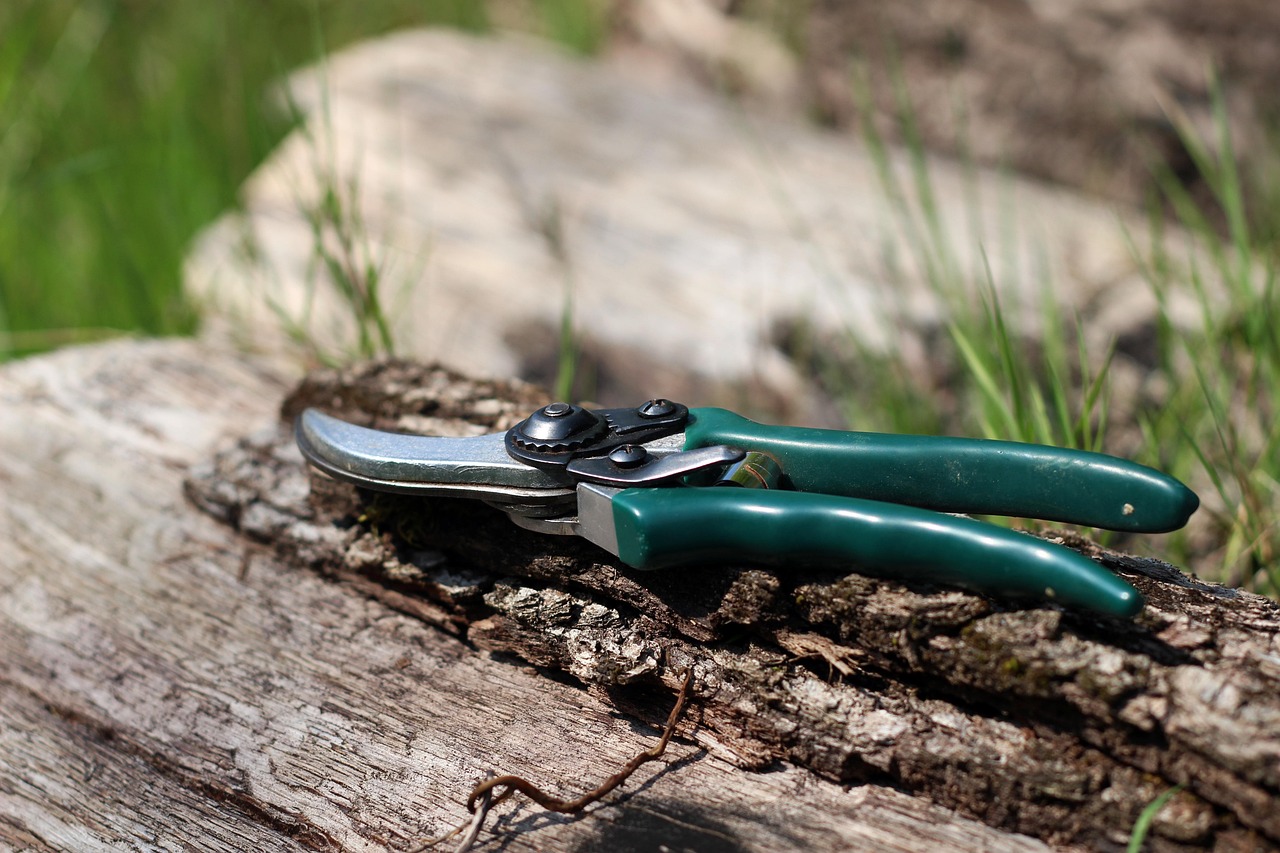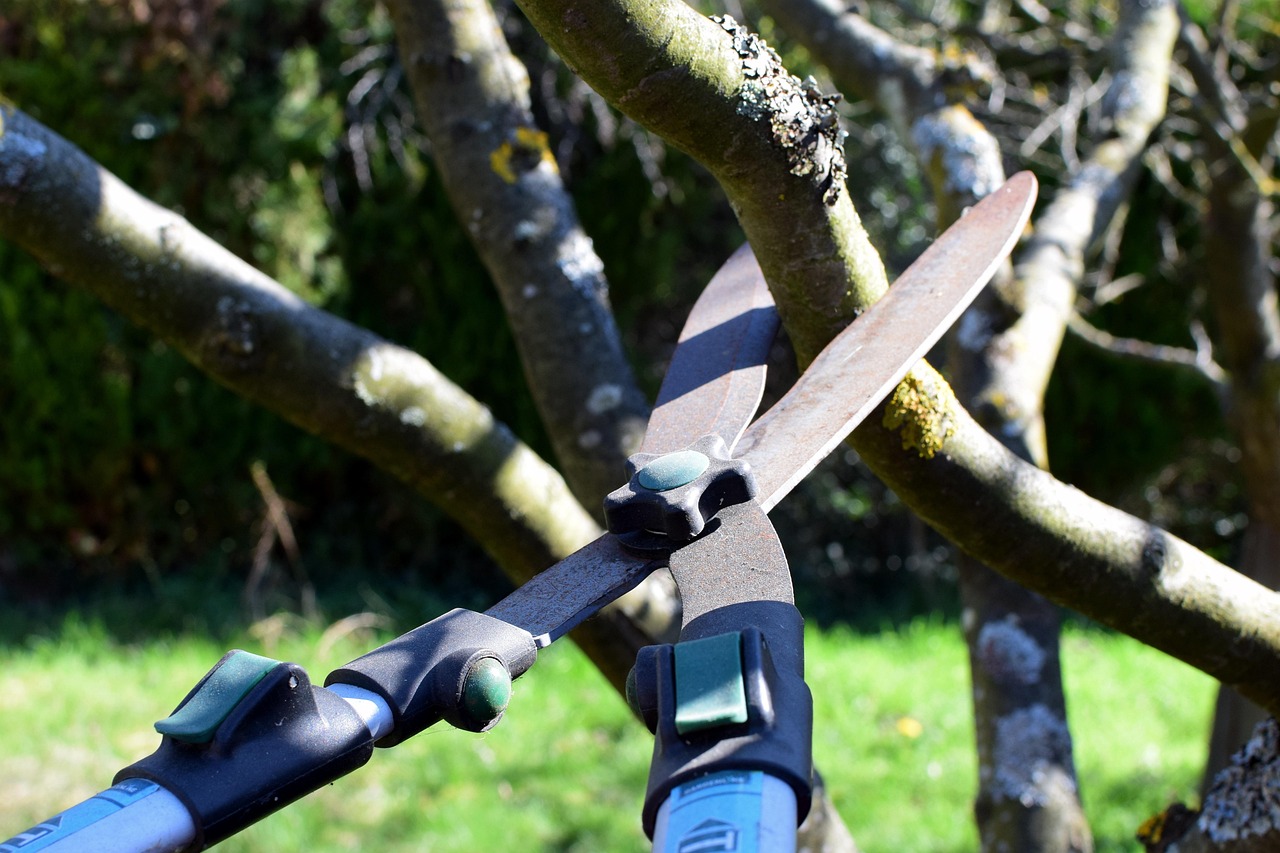Pruning techniques for coastal wind resistance involve shaping trees and shrubs to reduce wind resistance. This is vital for protecting plants from storm damage and ensuring healthy growth in coastal regions. Proper pruning methods can enhance structural integrity and minimize the risk of breakage.
Understanding Coastal Wind Resistance
Coastal areas are often characterized by strong winds, particularly during storms. These winds can exert significant pressure on trees and shrubs, leading to breakage or uprooting. Understanding how wind affects plants is critical for effective pruning practices. When wind blows against a plant, it creates turbulence that can destabilize its structure.

Wind resistance is influenced by several factors, including the shape, size, and health of the plant. Plants that are well-pruned can better withstand high winds due to their reduced surface area and improved structural integrity. This is particularly important for coastal gardeners and landscapers who need to protect their investment in plants.
Key Factors in Pruning for Wind Resistance
Several factors play a role in how effective pruning can be for wind resistance:
- Plant Species: Different species have varying abilities to withstand wind. Some are naturally more resilient.
- Growth Habit: Understanding whether a plant grows upright or spreads out can affect how you prune it.
- Timing: The time of year when you prune can influence the plant’s recovery and ability to resist wind.
- Pruning Technique: The specific methods used can make a significant difference in the plant’s health and wind resistance.
Common Pruning Techniques
There are several pruning techniques that can be utilized to enhance wind resistance in coastal plants. These methods aim to create a more streamlined shape that reduces wind catchment while maintaining the plant’s health.

Crown Thinning
Crown thinning involves selectively removing branches throughout the canopy. This technique reduces the overall density of the foliage, allowing winds to pass through more easily. It also encourages better light penetration and air circulation, which can improve overall plant health.
Crown Reduction
Crown reduction is a method where the height and spread of a tree or shrub are reduced. This is particularly useful for larger trees that may catch excessive wind. By reducing the crown, the center of gravity is lowered, making the plant less susceptible to uprooting.
Directional Pruning
This technique involves pruning branches in a specific direction to help guide growth away from prevailing winds. By directing growth, the plant becomes more aerodynamically shaped, which can significantly enhance its stability during strong gusts.

Removing Dead or Weak Branches
Regularly removing dead or weak branches is essential for improving a plant’s wind resistance. These branches are more likely to break during storms and can create additional stress on the plant. Keeping the structure clean and strong is key for durability.
Benefits of Pruning for Wind Resistance
The benefits of implementing proper pruning techniques extend beyond just wind resistance. Healthy pruning can lead to:
- Increased Light Exposure: Improved light penetration promotes healthy growth.
- Better Air Circulation: Enhanced airflow helps prevent fungal diseases.
- Improved Aesthetics: A well-pruned plant looks more appealing in any landscape.
- Enhanced Longevity: Proper care, including pruning, can extend the lifespan of trees and shrubs.
Tools for Effective Pruning
Using the right tools is vital for successful pruning. Below is a table summarizing common tools and their uses:

| Tool | Description | Use |
|---|---|---|
| Hand Pruners | Small, handheld cutting tool | For trimming small branches and stems |
| Loppers | Larger cutting tool with long handles | For cutting thicker branches up to 1.5 inches |
| Saws | Used for larger branches | For cutting heavy limbs that are too thick for pruners or loppers |
| Hedge Shears | Bigger scissors designed for hedges | For shaping shrubs and hedges |
Understanding these tools will aid in achieving effective results when pruning for coastal wind resistance. Proper technique combined with the right tools will enhance not only the health of your plants but also their resilience against harsh coastal winds.
Seasonal Considerations for Pruning
Pruning at the right time is crucial for maximizing wind resistance benefits. Different plants have specific seasons when pruning is most effective, and understanding these seasonal considerations can lead to better results.
Spring Pruning
Spring is typically a good time for pruning many trees and shrubs. As plants begin to enter their growth phase, pruning can encourage healthy new growth. However, it is vital to consider the specific species.
- Deciduous Trees: Pruning in late winter or early spring, before new growth starts, allows for better healing.
- Flowering Shrubs: For those that bloom on old wood, pruning should occur right after flowering to avoid removing buds.
Summer Pruning
Summer pruning can be beneficial, especially for controlling growth and improving wind resistance. It can also help manage the shape of plants as they fill out.
- Maintenance: This is an excellent time to remove dead or diseased branches.
- Shaping: Light pruning encourages lateral growth, creating a more compact form that resists wind.
Fall Pruning
Pruning in the fall is generally not recommended for most plants, as it can stimulate new growth that will be damaged by winter conditions. However, some exceptions exist:
- Late Bloomers: Plants that bloom late in the season may benefit from fall pruning after they have finished flowering.
- Structural Pruning: In certain cases, light structural pruning can help prepare plants for winter winds.
Winter Pruning
Winter is often the best time for pruning many deciduous trees and shrubs. During dormancy, the plants are less susceptible to stress and disease.
- Visibility: Without leaves, it is easier to see the structure of the plant and identify problem areas.
- Healing: Pruning during this time allows for faster healing once the growing season resumes.
Advanced Techniques for Coastal Wind Resistance
Beyond basic pruning methods, there are advanced techniques that can further enhance a plant’s ability to withstand coastal winds. These techniques are particularly useful for larger trees and more complex landscapes.
Coppicing
Coppicing is a traditional practice that involves cutting a tree back to ground level. This encourages vigorous new growth that can be more resilient against wind. It is especially effective for species like willow and hazel.
Pollarding
Pollarding is similar to coppicing but involves cutting branches back to a higher level on the trunk. This technique helps maintain a tree’s height while promoting dense foliage that can withstand wind pressure. It is often used on ornamental trees.
Windbreaks
Creating windbreaks with strategically planted trees and shrubs can protect more vulnerable plants from strong winds. This method involves planting a line of trees that will reduce wind speed in surrounding areas.
- Types of Windbreaks: Use a mix of evergreen and deciduous species for year-round protection.
- Spacing: Ensure proper spacing between trees to allow for airflow and reduce competition.
Pest and Disease Management Post-Pruning
After pruning, it is important to monitor plants for pests and diseases. Open wounds from pruning can attract pests or become entry points for pathogens. Implementing effective management strategies is crucial for maintaining plant health.
Pest Identification
Pests such as aphids and spider mites can weaken plants, making them more susceptible to wind damage. Regularly inspect foliage and branches for signs of infestation.
Disease Prevention
Diseases like powdery mildew or fungal infections can develop on stressed plants. To prevent such issues:
- Use Clean Tools: Always use sterilized tools to minimize disease transmission during pruning.
- Avoid Overcrowding: Ensure adequate spacing between plants to allow for air circulation and reduce humidity.
The Role of Soil Health in Plant Stability
The health of the soil directly influences plant stability and resilience against wind. Healthy soil promotes strong root systems that anchor plants securely into the ground.
Soil Composition
A well-balanced soil mixture should contain organic matter, clay, silt, and sand. This combination allows for good drainage while retaining moisture necessary for plant growth. Testing soil composition can help in making necessary amendments.
Nutrient Management
Nutrients play a vital role in plant health and stability. Adequate levels of nitrogen, phosphorus, and potassium are essential. Consider regular soil testing to ensure nutrient levels are optimal.
Drought Resistance
In coastal areas, drought can stress plants, making them more vulnerable to wind damage. Implementing practices that enhance drought resistance, such as mulching and proper watering techniques, can promote stronger plants.
The interplay between pruning techniques, seasonal timing, pest management, and soil health creates a holistic approach to enhancing coastal wind resistance in plants. These methods not only protect against physical damage but also support overall plant vitality in challenging coastal environments.
Choosing the Right Plants for Coastal Areas
Selecting the appropriate plants is crucial for ensuring wind resistance in coastal regions. Certain species are naturally more resilient to harsh coastal conditions, including high winds and salt exposure. Understanding these plant characteristics can lead to a more successful landscape.
Native Plants
Utilizing native plants is one of the best strategies for coastal landscaping. Native plants are adapted to local conditions and often have better resistance to wind and salt.
- Low Maintenance: Native plants generally require less care as they are suited to the local environment.
- Habitat Support: They provide food and shelter for local wildlife, enhancing biodiversity.
- Soil Adaptation: Native plants typically adapt well to local soil types, contributing to overall soil health.
Examples of Wind-Resistant Native Plants
Here are some examples of native plants that thrive in coastal environments and offer good wind resistance:
| Plant Name | Type | Wind Resistance |
|---|---|---|
| Beach Strawberry | Ground Cover | High |
| Sea Oats | Grass | Very High |
| Coastal Pine | Tree | High |
| Saltbush | Shrub | Medium |
Creating a Resilient Landscape Design
A well-planned landscape design can significantly improve wind resistance. By considering plant placement, groupings, and layering, gardeners can create a more robust environment.
Layering Techniques
Layering involves planting in tiers to create a natural windbreak. This technique helps disperse wind energy and protects more vulnerable plants.
- Foreground: Plant low-growing shrubs or ground covers to reduce wind impact at the soil level.
- Midground: Use medium-sized shrubs that can withstand wind while providing habitat for wildlife.
- Background: Taller trees and large shrubs should be placed at the back to act as a barrier against strong winds.
Group Planting
Planting in groups rather than single specimens can enhance wind resistance. Grouped plants can support each other structurally and create a more cohesive barrier against winds.
Irrigation and Water Management Practices
Irrigation plays an essential role in establishing and maintaining healthy plants, especially in coastal regions where salt and drought can affect growth. Effective water management practices should be implemented to ensure that plants thrive.
Drip Irrigation Systems
Drip irrigation systems are an efficient way to deliver water directly to the roots of plants. This method minimizes water loss and reduces salt buildup in the soil.
Rainwater Harvesting
Collecting rainwater for irrigation can support plant health while conserving resources. Rain barrels or cisterns can be installed to capture runoff during storms.
Mulching
Applying a layer of mulch around plants helps retain moisture in the soil, suppress weeds, and regulate soil temperature. Organic mulches, such as wood chips or straw, also improve soil quality as they decompose.
Monitoring and Maintenance Practices
Regular monitoring and maintenance are crucial for ensuring that plants remain healthy and resilient against wind damage. A proactive approach can help identify issues before they become severe.
Regular Inspections
Conducting routine inspections allows gardeners to assess plant health, check for pests or diseases, and evaluate the effectiveness of pruning techniques. Look for signs of stress, such as yellowing leaves or stunted growth.
Seasonal Fertilization
Applying fertilizers during the growing season can help boost nutrient levels in the soil. Use slow-release fertilizers that provide consistent nutrition over time without overwhelming the plants.
Utilizing Technology in Plant Care
The integration of technology into gardening practices can enhance plant care and monitoring efforts. Various tools and apps can assist gardeners in managing their coastal landscapes effectively.
Drones for Landscape Monitoring
Drones equipped with cameras can provide aerial views of landscapes, helping identify areas needing attention. They can be particularly useful for assessing larger properties where traditional inspection methods may be challenging.
Irrigation Sensors
Irrigation sensors monitor soil moisture levels and automatically adjust watering schedules based on weather conditions. This technology helps prevent overwatering or underwatering, contributing to healthier plants.
Mobile Apps for Garden Management
There are several mobile apps available that assist gardeners in managing plant care schedules, pest identification, and even tracking growth patterns over time. Utilizing these tools can streamline garden management tasks.
The combination of selecting resilient plants, employing effective design strategies, and integrating technology creates a comprehensive approach to enhancing wind resistance in coastal gardens. Each element plays a pivotal role in ensuring the longevity and health of the landscape in challenging coastal environments.
Additional Considerations for Coastal Gardening
When managing a coastal garden, there are several additional factors to consider that can influence the success of your pruning techniques and overall plant health. These considerations include understanding local weather patterns, soil salinity, and the effects of salt spray on plants.
Weather Patterns
Coastal areas often experience unique weather conditions, including high humidity, salt-laden winds, and sudden temperature changes. Understanding these patterns is essential for selecting the right plants and implementing effective care strategies.
- Wind Patterns: Regularly monitor wind directions and speeds to identify which plants may require additional protection or pruning.
- Rainfall: Keep an eye on rainfall data to adjust irrigation schedules appropriately. This ensures that plants receive adequate moisture without becoming overwatered.
- Temperature Extremes: Be aware of the temperature range throughout the year. Coastal areas can experience both cold snaps and heat waves, influencing when to conduct pruning or planting activities.
Soil Salinity
Salt can be detrimental to plant health. Coastal soils often have higher salinity levels, especially in areas near the ocean. Monitoring soil salinity is crucial for maintaining healthy plants.
- Testing Soil: Conduct regular soil tests to determine salinity levels and make necessary amendments to improve soil quality.
- Salt-Tolerant Plants: Incorporate salt-tolerant species into your landscape design. These plants can thrive in higher salinity conditions without suffering damage.
Managing Salt Spray
Salt spray from ocean winds can harm plants by causing leaf burn and dehydration. Strategies to manage salt spray include:
- Barrier Plants: Use taller shrubs or trees as barriers to protect more sensitive plants from direct exposure to salt spray.
- Regular Rinsing: Rinse plants with fresh water after heavy salt-laden wind events to remove accumulated salt from leaves and stems.
Community Engagement and Resources
Engaging with local gardening communities can provide support, resources, and shared experiences related to coastal gardening. Local knowledge can be invaluable when it comes to understanding specific challenges and effective practices.
Joining Gardening Clubs
Participating in local gardening clubs or societies allows gardeners to connect with like-minded individuals who share similar interests. These groups often host workshops and events focused on coastal gardening techniques.
Accessing Extension Services
Many regions offer extension services through universities or agricultural departments. These services provide valuable resources, including:
- Workshops and Seminars: Educational events on various gardening topics, including pest management and pruning techniques.
- Expert Advice: Access to horticulturists who can answer specific questions about coastal gardening challenges.
Final Thoughts
The journey of cultivating a coastal garden that resists wind damage involves a multi-faceted approach. By understanding the unique challenges posed by coastal environments, gardeners can make informed decisions regarding plant selection, pruning techniques, and maintenance practices. The integration of technology and community resources further enhances the ability to create a thriving landscape.
Key takeaways include the importance of choosing native and resilient plant species, implementing effective pruning methods tailored to seasonal conditions, and maintaining healthy soil. Additionally, being proactive in monitoring plant health, utilizing technology for better management, and engaging with local gardening communities can significantly contribute to a successful coastal gardening experience.
Ultimately, with careful planning and ongoing education, gardeners can create beautiful landscapes that not only withstand the rigors of coastal winds but also flourish in their unique environment. This commitment to understanding and nurturing coastal gardens will lead to sustainable practices that benefit both the landscape and the surrounding ecosystem.
